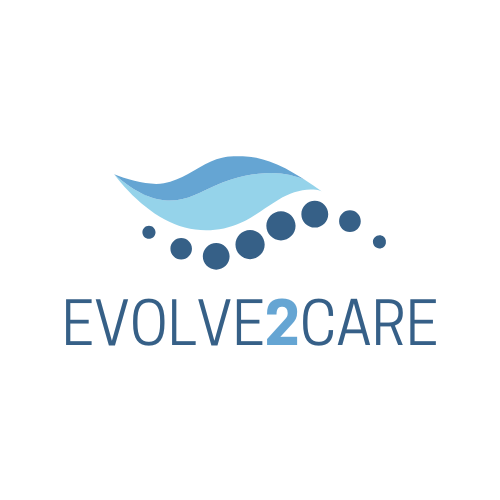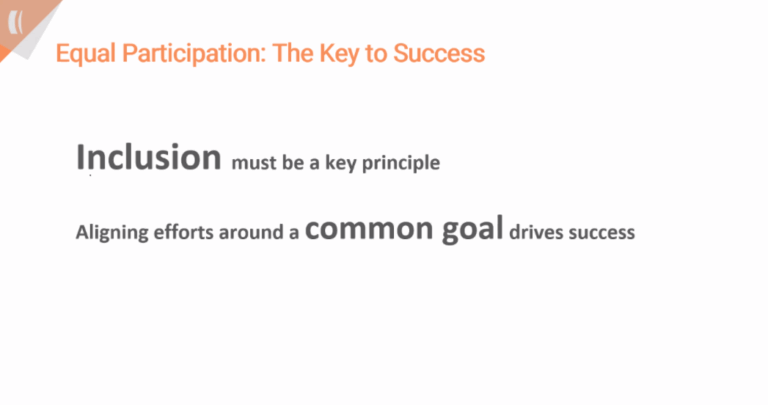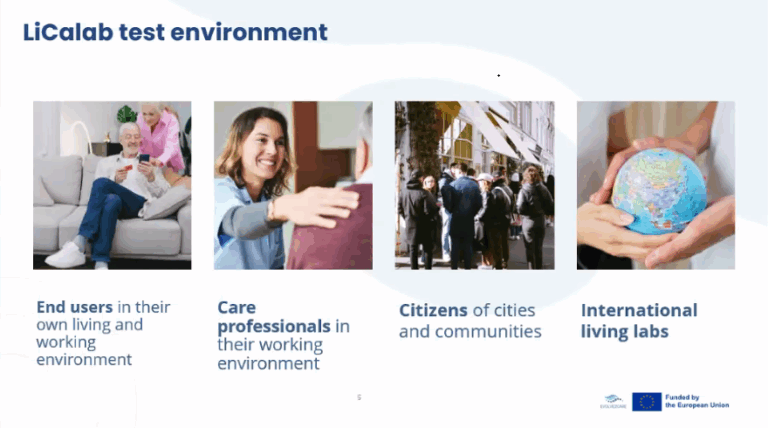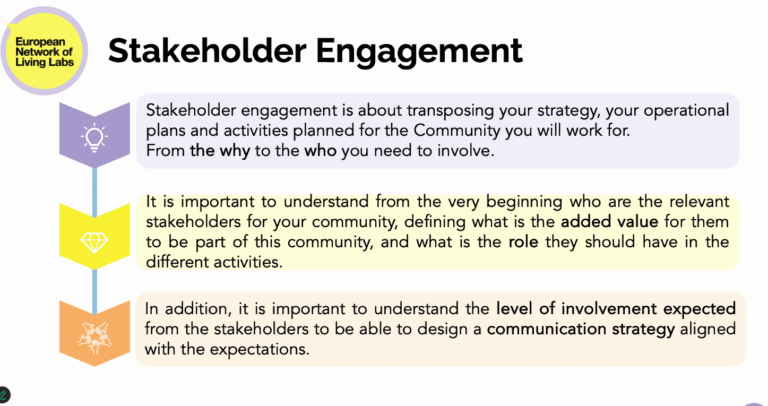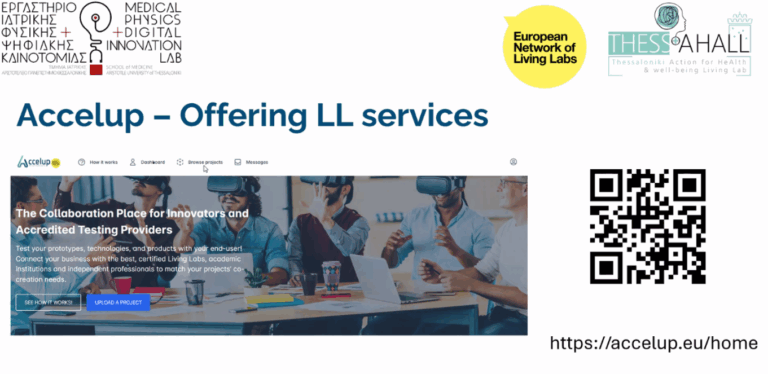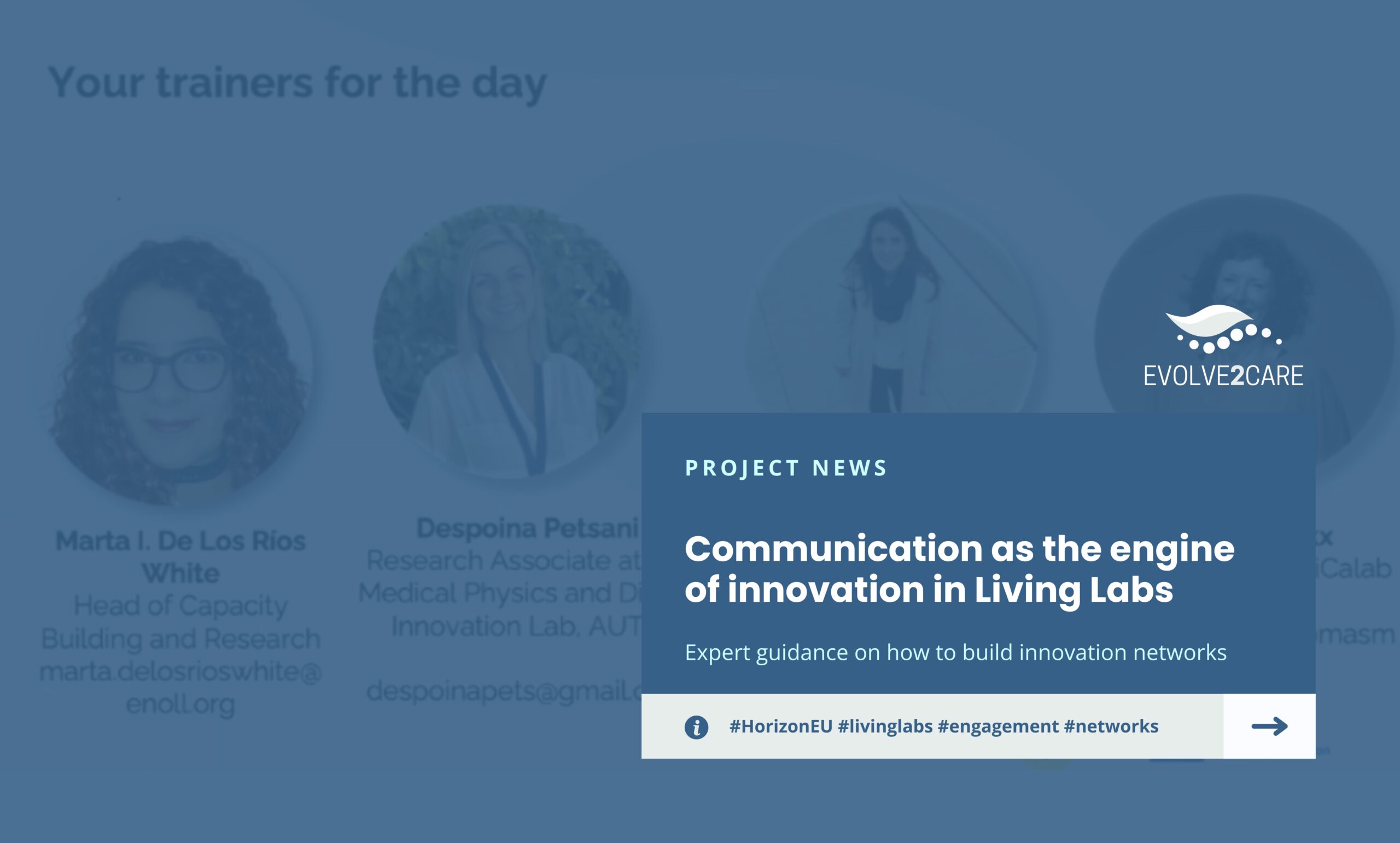
The fourth session of the “Trainings on Service Design for Living Labs,” held on September 3, 2025, focused on building innovation networks and engaging stakeholders in meaningful ways. Titled “Building Innovation Networks: Communication and Engagement”, the webinar brought together four speakers who shared practical cases, conceptual frameworks, and tools for stakeholder engagement within Living Lab ecosystems.
Clara Garcia Blanch, Pilot Test Manager at the Social Digital Lab (Suara), opened the session with practical reflections on identifying and engaging stakeholders in co-creation processes. She stressed that while visible actors are crucial, hidden stakeholders often influence project outcomes in unexpected ways. Drawing from her experience, she underlined the importance of mapping, listening, and uncovering less obvious contributors in order to design inclusive and sustainable innovations.
Leen Broeckx, Panel Manager at LiCalab, presented how her organization structures stakeholder engagement in health and care innovation. LiCalab operates test environments involving citizens and care professionals, drawn from its own database, in real-life settings, and works in close collaboration with hospitals, residential care centres, and home care services. Leen explained how their stakeholders are categorized into internal and external, how their stakeholder analysis uses approaches such as power/interest grids to position actors and design suitable engagement activities. She described the identifying needs process, which includes workshops, expert interviews, and inspiration sessions. As an example, she presented the “Orion” dementia care case, where staff and users tested smart technologies such as bed sensors and smart lamps.
Marta I. De Los Ríos White, representing the European Network of Living Labs (ENoLL), provided the theoretical foundation for stakeholder engagement. She defined categories such as internal vs. external, primary vs. secondary, and direct vs. indirect stakeholders, while clarifying distinctions between stakeholders, users, and customers. Marta also highlighted the role of the Quadruple Helix Model, which positions the public sector, businesses, education and research, and civil society as central actors.
The instructor also shared practical tips and tricks for effective communication with stakeholders:
- Be transparent: Clear communication builds trust and credibility.
- Be adaptable: Be prepared to adjust communication strategies as projects evolve and stakeholder needs shift.
- Ensure accessibility: Consider potential language barriers and disabilities by developing inclusive strategies.
- Aim for two-way communication: Establish mechanisms for feedback and input rather than one-way dissemination.
- Be present and responsive: Actively listen to stakeholder concerns, questions, and suggestions, and respond promptly.
Finally, she explained why citizens are essential stakeholders, because they:
- Align the community’s projects with real local needs
- Secure people’s long-term support to the community
- Ensure social acceptance
- Ensure transparency and accountability in decision-making and community operations
- Empower people to make informed decisions
- Boost innovation and creativity, bringing fresh ideas and solutions
- Stimulate economic benefits for the people, such as job creation within the community
Concluding the session, the focus shifted to the Thessaloniki Active and Healthy Ageing Living Lab (Thess-AHALL), presented by Despoina Petsani, Research Associate at the AUTH Medical Physics and Digital Innovation Lab, showcasing how long-term citizen engagement and structured tools can transform a Living Lab into a robust innovation ecosystem. Despoina presented outcomes from projects such as Long Lasting Memories, showing impacts in cognitive and physical training. She also showcased practical tools: Accelup, a collaboration platform for innovators and Living Labs; PaneLab, a panel management platform; and a methodological guide (partners of experience) for citizen involvement. Thess-AHALL’s work demonstrates how trust, continuity, and structured tools help Living Labs evolve into strong innovation ecosystems.
What's next?
The training series will continue with its fifth session on Certification & Standardization of Living Labs, taking place on September 10, 2025, at 15:00 CEST. This upcoming webinar will explore the essential requirements for certification, the benefits of achieving it, and the international recognition it brings to Living Labs.
